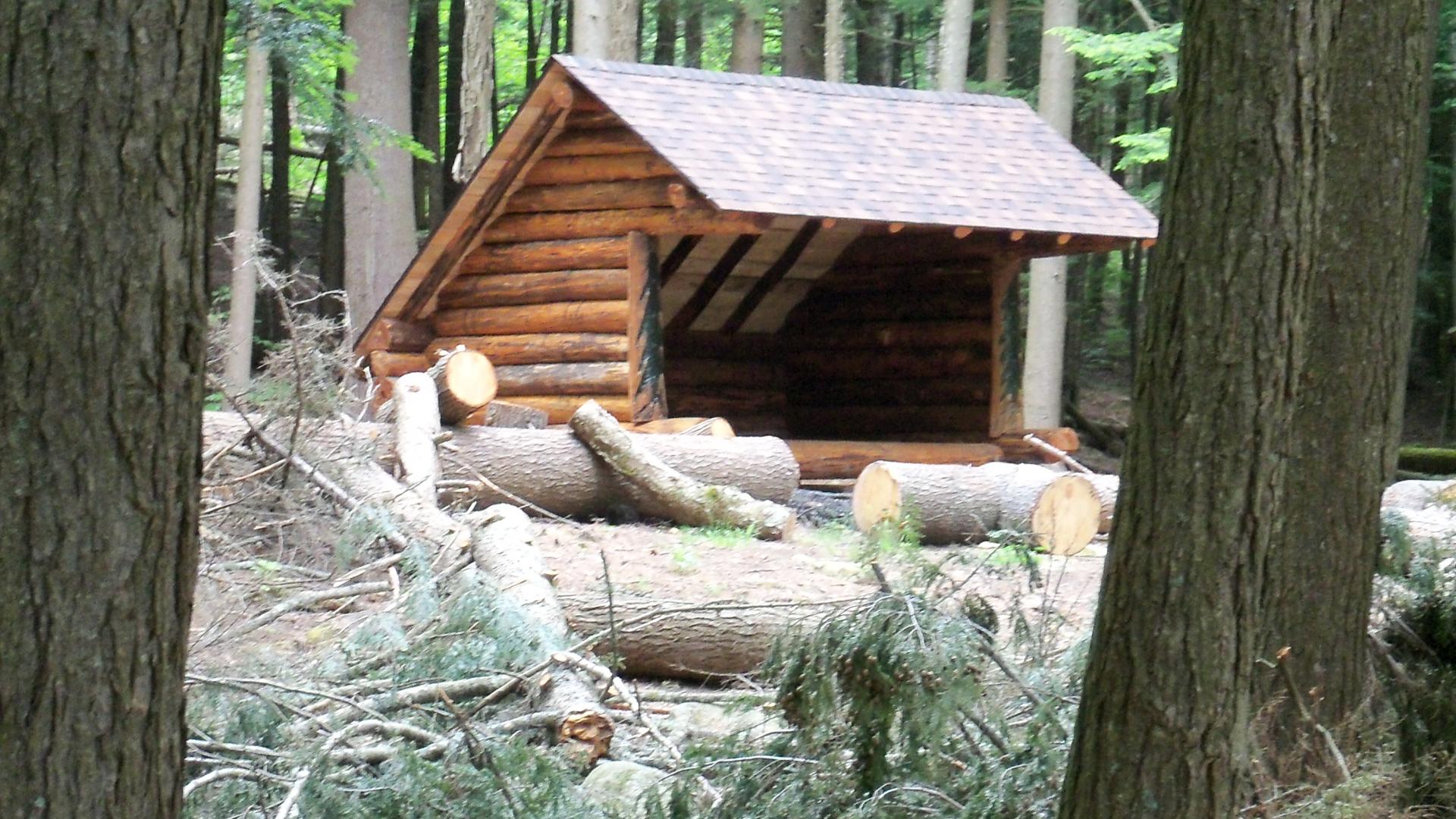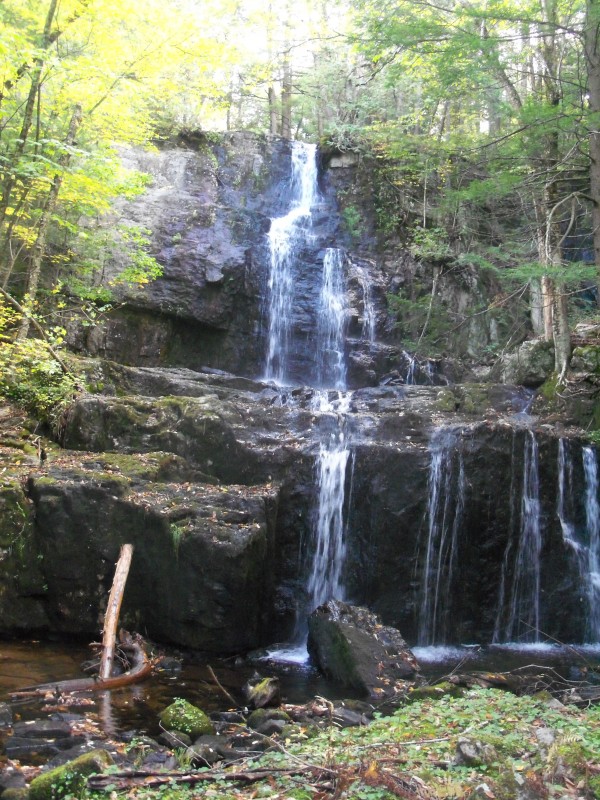
100+ Miles
When out enjoying the public recreation land along the Adirondack Coast it’s easy to become enamored with the undeveloped natural landscape and captivated by the scenic beauty of the mountains, streams and forests. But, are we sufficiently appreciative of all the components that make this possible? Do we ever consider who maintains the trails that permit us access, or wonder who built the convenient lean-to for our shelter and how it managed to get in this remote location? The New York State Department of Environmental Conservation manages most public recreation land in New York State. The Lake Champlain Region lies within DEC’s Region 5. There are hundreds of square miles of public land within Region 5 maintained by the DEC. To gain a better understanding of what is involved, I recently spent some time with Brett Becktold, responsible for maintaining over 100 miles of DEC’s trails. He does this practically single-handedly. Pharaoh Lake Wilderness, Hammond Pond Wild Forest and Split Rock Wild Forest are just a few of the areas within the Lake Champlain Region that he maintains.
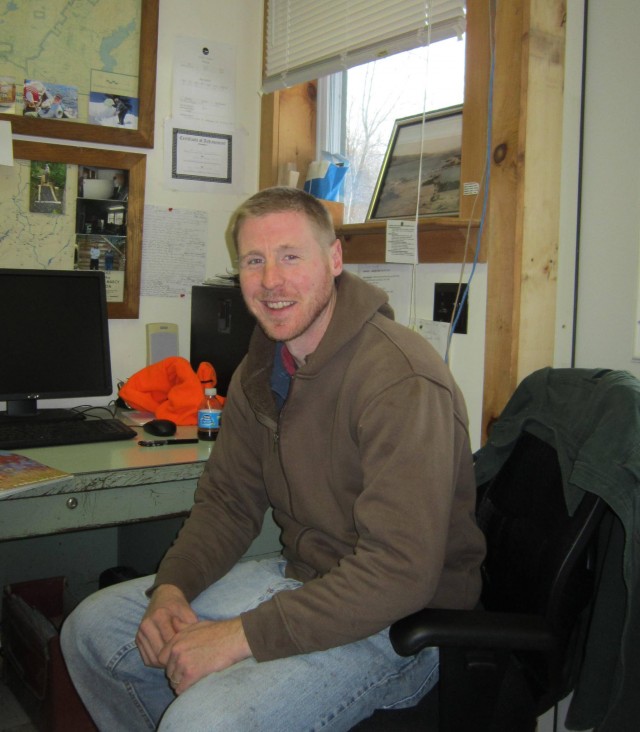
Brett works out of the DEC’s Maintenance Center at Crown Point. I was able to catch up with him only because right now it’s winter and he was assisting the maintenance crew there with equipment preparation for the forecasted snow storm. Another time of year, I would have had to don hiking gear and be prepared for a hardworking wilderness adventure, but certainly a scenic one.
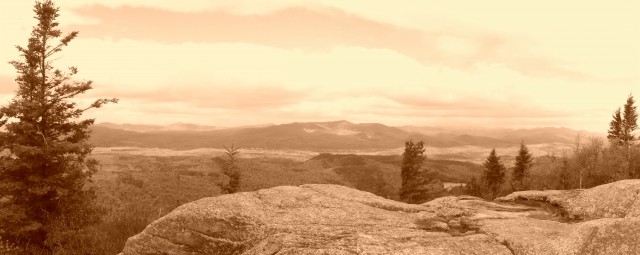
In talking to Brett, I could easily tell that he loves his job. “Being in the woods, around nature every day, is more than great,” he told me, “even when it’s hot, buggy, raining, snowing, it’s still fantastic!” Trying to get a handle on what might be a typical day for him, I began to realize that every day is a new adventure for someone with his responsibilities. He explained what he did more by “seasons.”
The Seasons of Trail Maintenance
“Spring is blowdown season,” he explained. He heads for the Wilderness Areas first, right at the beginning of April. Wilderness areas have limited time when power equipment can be used; from the first of April until nearly Labor Day. Throughout the other seven months only hand tools can be used. Brett is responsible for over 80 miles of Wilderness Area trails. After the damaging winter storms, chain saws, brush hogs, gas drills, etc. are essential to make any clean-up progress at all. Also checked for damage and needed repairs are the lean-tos, campsites, access roads, and the pit privies before the onslaught of hikers and campers arrive. “It can be a tough time of year, a bit overwhelming, as you assess all that needs to be done and establish priorities. Generally, I address the most popular trails first,” he said.
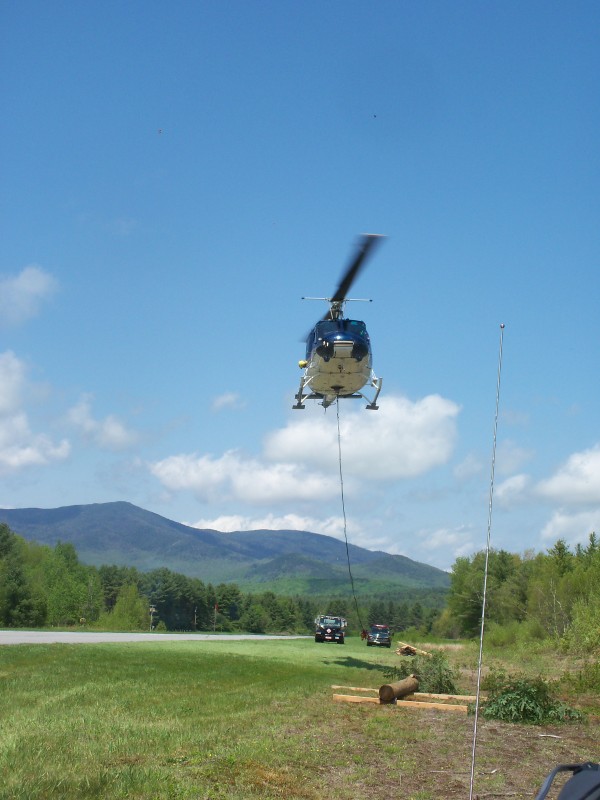
Summer is bug and heat season. That’s when the routine maintenance gets done in the Wilderness Areas, and the 20+ miles of Wild Forest trails need to be addressed. Cleaning campsites, brushing trails, and moving pit privies are additionally on the list of things to do. During the summer he sometimes gets a DEC seasonal helper assigned. Brett is appreciative and relates to seasonal help since he began as a seasonal himself. For a few years he worked closely with Darwin Tubbs, a veteran in trail maintenance who is now retired. Also during summer, he gears up for the two “volunteer days” he gets a year. Usually twice during the summer season, the 46ers (the name given to those individuals who have hiked all of the Adirondacks’ 46 High Peaks) gather to help with trail projects and maintenance. “I’ve seen as many as 28 volunteers show up,” he told me. Projects need to be planned and coordinated to make the best use of time and their assistance. “Many hands make light work... whether it’s shingling a lean-to roof, building a bridge, or working on a new trail.” He’s grateful for the help. Once fall arrives the preparation for the winter season begins. Things need to be “buttoned up” and occasionally items and activities that were low on the priority list can be addressed.
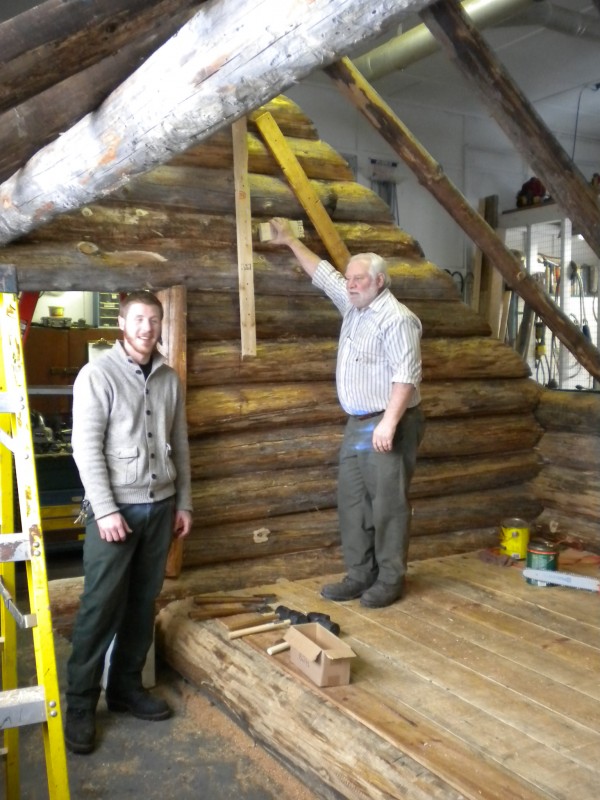
Lean-To Artistry
Right now we’re in winter. During this time of year some of Brett’s time, when not dealing with snowstorms, is spent constructing lean-tos inside the Crown Point Maintenance Facility. Piece by piece, these structures are individually hand crafted, predominantly using hand tools. Every log is custom fit and carefully labeled. Once finished, they are then disassembled, and transported to a remote wilderness location for reassembly. More than likely transportation has to be by helicopter sling-load or boat. The lean-to’s permanent resting place is determined by a DEC Forester. It’s apparent Brett takes a great deal of pride in handcrafting these structures; rightfully so! I am so impressed with the details. Precision cuts that allow all logs to fit snugly together and creative touches; knotholes that become cup holders, artistic carvings on the front support posts. “These structures should last 50-60 years if properly cared for,” he explained. I can only imagine the number of hikers who will be “wowed” by these creations.
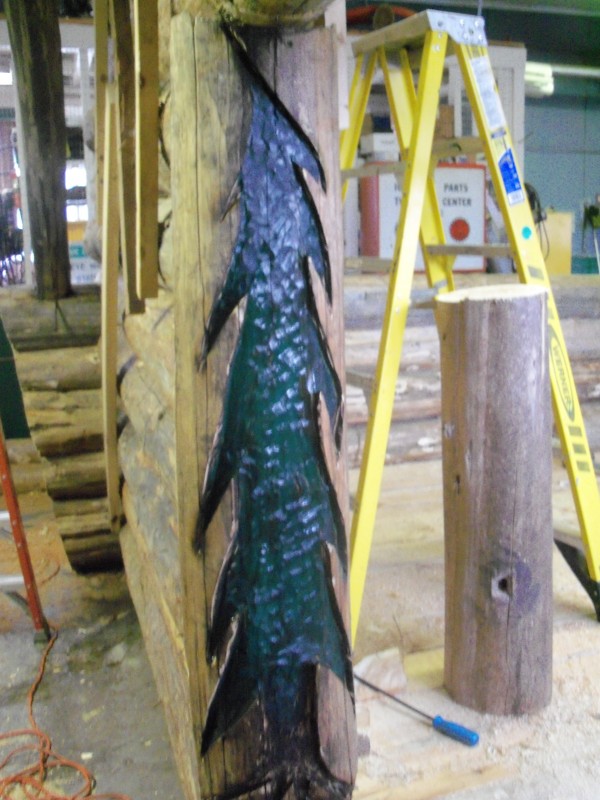
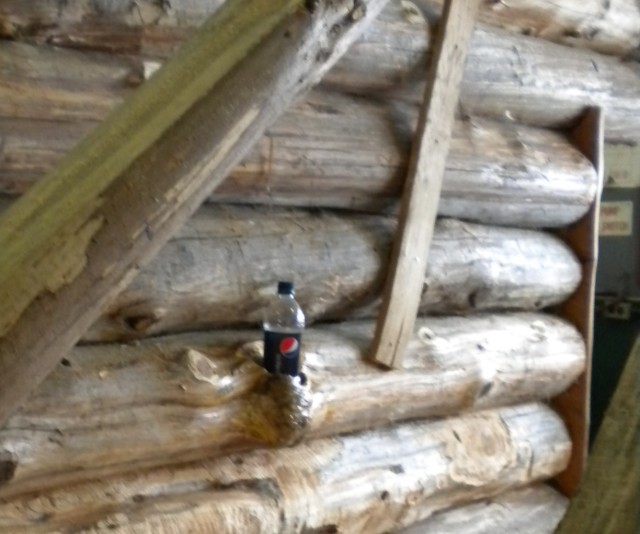
For a guy that loves the outdoors and spends most of his time in our wilderness and wild forest, Brett is really a very social animal. He tells me that one of the many perks of being on the trails is the people you meet. He’s encountered people of all ages and from all walks of life. “They are filled with stories” he relates, “telling you where they’ve been, what they’ve encountered, not only along the trails, but throughout their lives.” He told me that on several occasions, he has located “lost” individuals and that has been very rewarding.
Tree Climbers?
I asked Brett about encounters with our Adirondack wildlife. He told me he’s pretty much seen it all; bear, eagles, and chuckled as he recalled one unusual encounter. “It was when I was working with Darwin,” he said. “We were quite a way into the forest when we spotted a ground hog rather high in a tree; seriously” he emphasized. “It was a bit baffling.” Ground hogs, also known as woodchucks, don’t normally climb trees and aren’t forest animals. They are most likely to be found in our fields, pastures - or worse yet, gardens! I tried to envision a woodchuck in a tree; it had me baffled as well.
I let Brett get back to work, but asked one final question of him. I asked him for advice to anyone venturing out in our Wilderness or Wild Forest Areas. “Do your homework,” he recommended. “Acquire a good hiking trail map for the location you are exploring. Always register at the trailhead, leaving date, time, where you plan to hike, and how long you expect to be in the forest. Stick to the trail and most importantly: be certain to let someone responsible know of your plans.”
Experience the Adirondack Coast
Plan a trip and come see our trails and lean-tos for yourself. View our hiking page, learn about the other things to do here, and check out the local lodging & dining.

